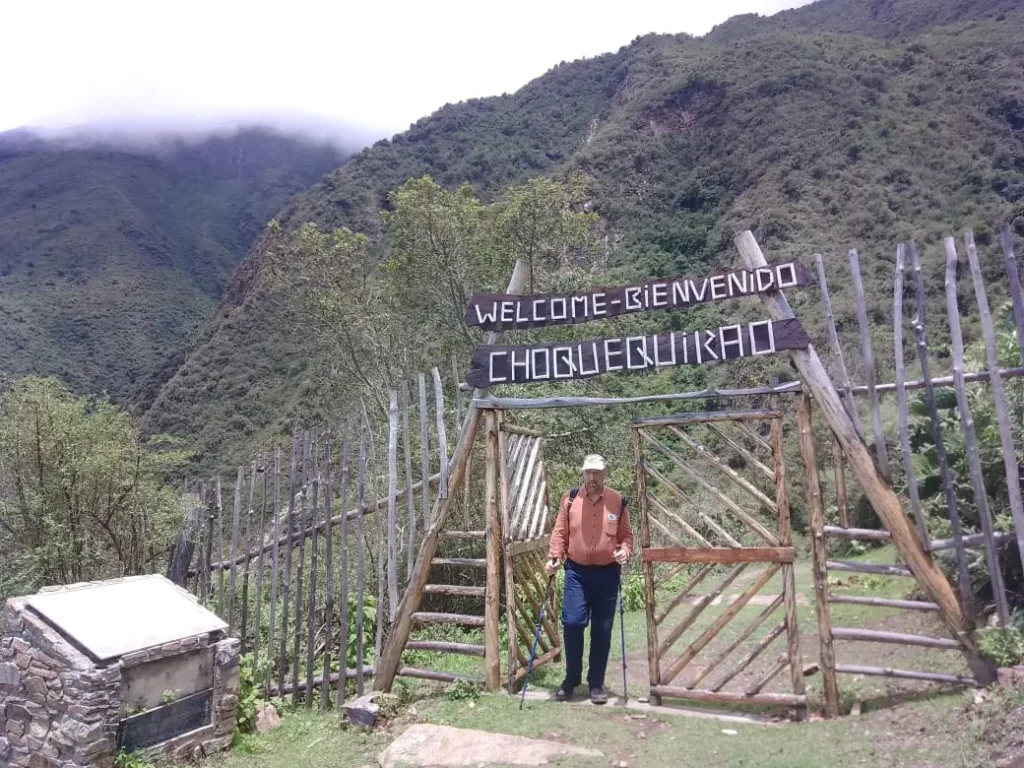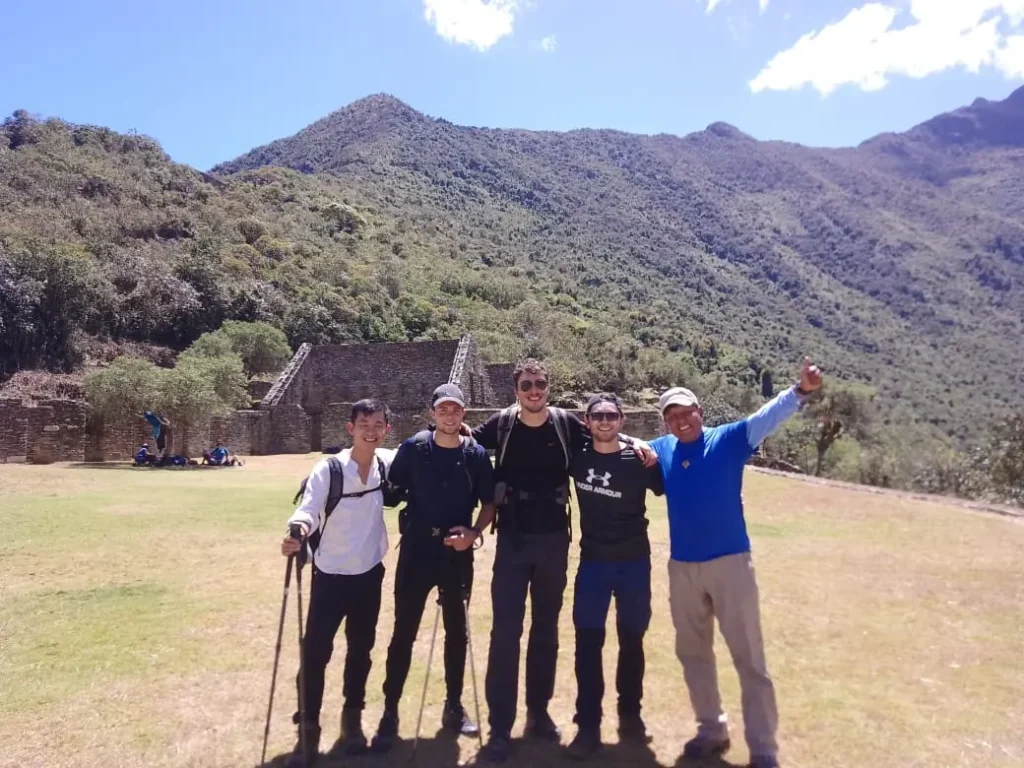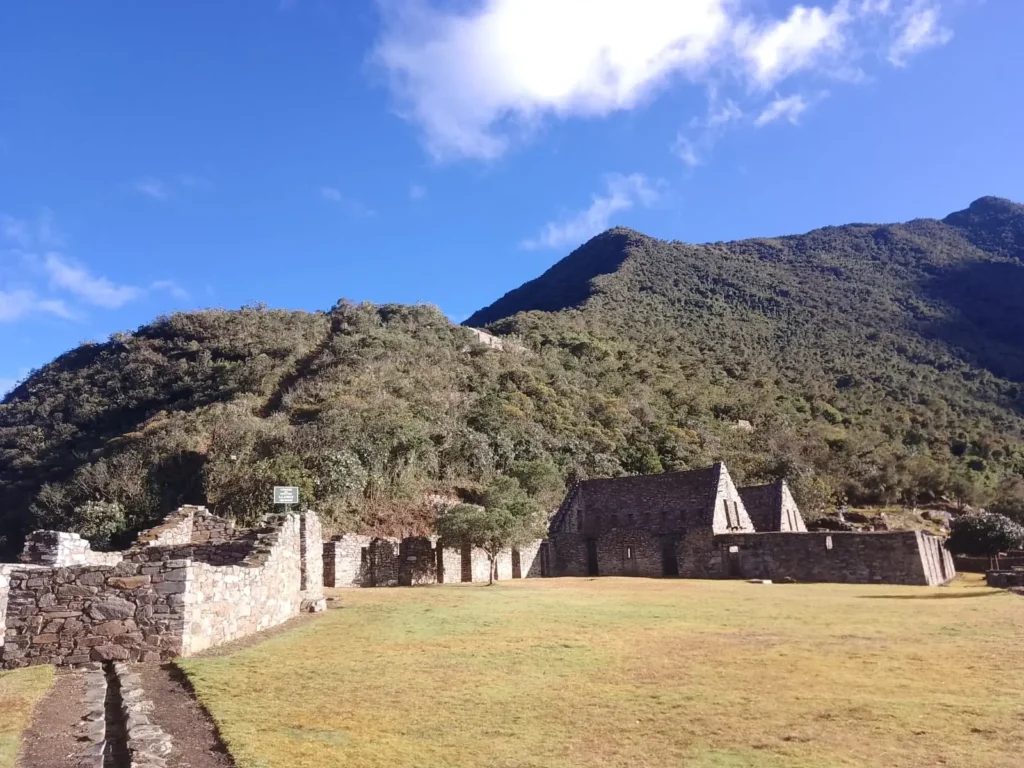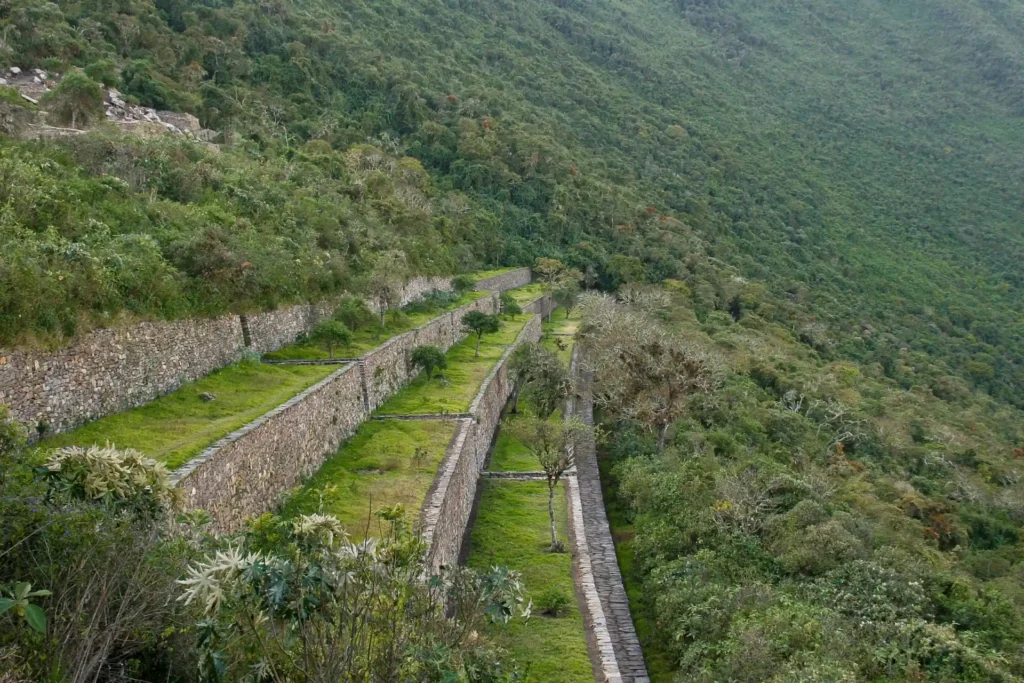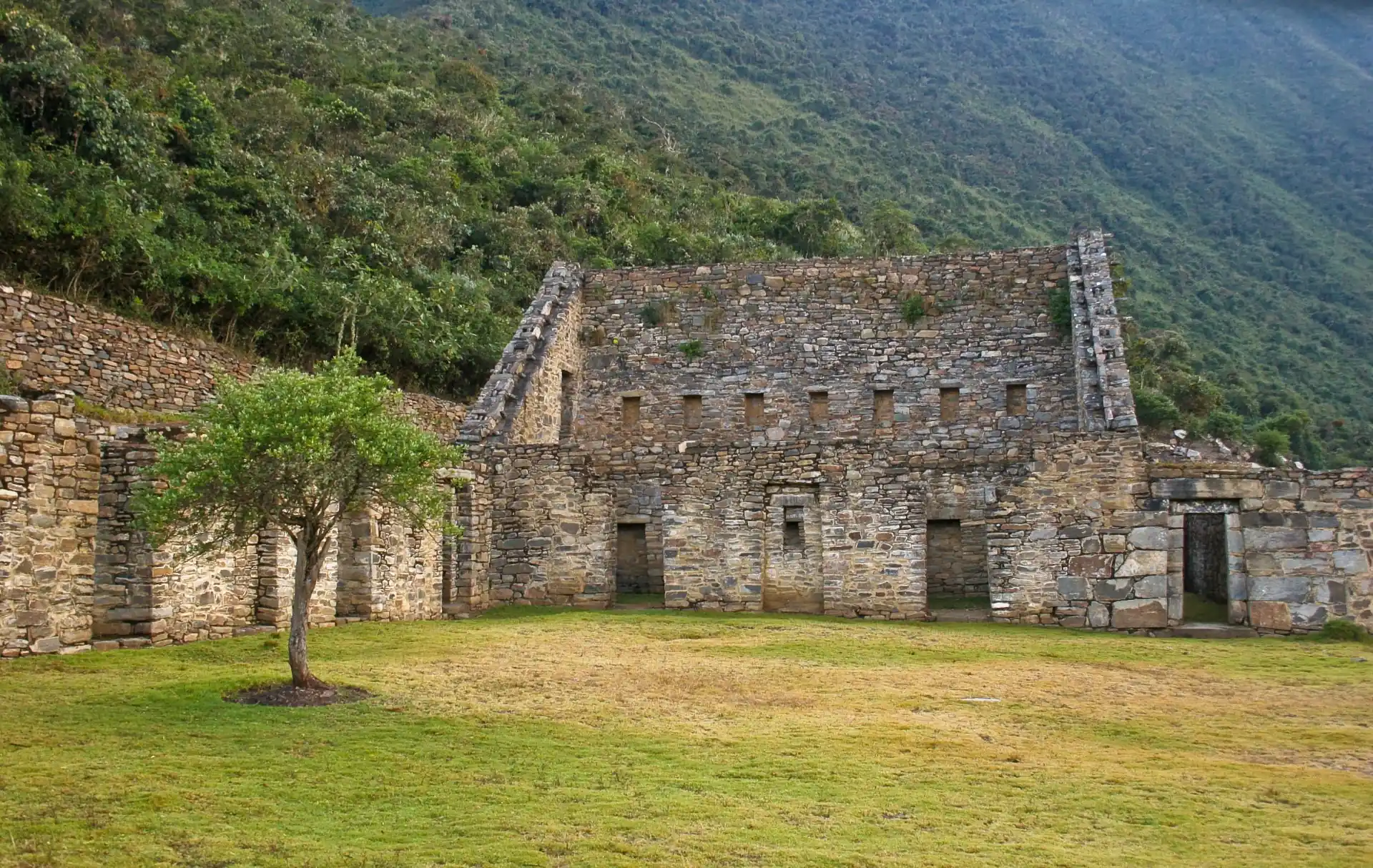Choquequirao Cusco Trek 4 Days
4 Days & 3 Nights
|
From US$340 person
Adventure, Cultural
Moderate
English, Spanish
Camping
Max 10 people
Choquequirao, which means “Cradle of Gold”, is a magnificent archaeological complex located in the Vilcabamba mountain range, in the Cuzco area. It is believed that this mountain range was the last refuge of the Incas in the resistance conquest, led by Manco Inca II.
Possibly built by Tupac Yupanqui Inca, this archaeological complex stands out for its terraces decorated with llamas and a shepherd in the Llamachayoc sector. Another interesting detail is that these terraces are built with stones in a vertical position.
We can also see a spectacular demonstration of the high level of development reached by the Incas in the sector known as Pacchayoq, which includes a system of water channels, irrigating a complex of agricultural terraces.
The steepness of the slope where these terraces are located is impressive.
On our trip, we will be able to enjoy spectacular geography, native flora and fauna of the area, inter-Andean valleys and the rainforest.
The temperature on this trek can range from a minimum of 5ºC / 41ºF at night, and a maximum of 23ºC / 73ºF during the day.
It is recommended to follow the basics of ecotourism on our tour. We must respect and protect the environment, as well as the archaeological complexes and local customs.
Choquequirao Trek 4 Days Tour
Day 1: Cusco – Chikiska
We leave the city of Cusco early, driving along the road that goes north-west through the famous Pampas de Anta or Yawar Pampa (Pampa of blood, because of the fierce battle between the Incas and the Chankas for possession of the city of Cuzco). We cross the mountains and descend to the warm town of Limatambo (2600m / 8530ft), where the archaeological site of Tarawasi is located.
We continue towards the Cunyac Bridge over the Apurimac River, the natural border between the Cuzco and Apurimac regions. We follow the road to the settlement of Curahuasi, famous for its aromatic liquor: Macerado de Anis. Our next stop is the enigmatic and famous Saywite Stone. All these places can be visited on our last day, on our way back to the city of Cuzco.
Our last stop is the town of San Pedro de Cachora (2909m / 9543ft), in the Apurimac region. We leave our motorized transport for the next 4 days. We have lunch. Here in Cachora, as it is often called, we can buy the things we least want to take.
We begin our walk, leaving the city to the north, with a spectacular view of the snow-capped Padreyoq. We cross the Cachora stream and climb through a forest of eucalyptus and refreshing native vegetation to the dirt track that is passable by cars, from where the road is flat to the observation post at Capuliyoq (2941m / 9648ft). Estimated time to reach this point is approximately 3 hours. From the lookout point, there is a spectacular view of the Apurimac River and Choquequirao.
We begin the descent through a zigzagging trail, crossing scrubland and later a forest of native trees called Phaty, in about 3 hours. Our camp awaits us at Chikisca (1836m / 6023ft). We can expect a warm night in the valley.
Total estimated time is 6 hours, and a distance of 19 kilometers / 12 miles.
Day 2: Chikiska – Choquequirao
After a hearty breakfast, we begin our descent to Playa Rosalina (1800m / 5905ft), where we check in at an INC checkpoint, cross the bridge over the Apurimac River. Time to this point will be approximately 1 hour.
We start our way uphill, on a zigzagging road, towards Santa Rosa (2095m / 6873ft), where we can take a refreshing rest.
We continue uphill to Marampata (2913m / 9557ft), a flat place where we can rest in similar conditions to Santa Rosa, which enjoys a splendid view of Choqequirau. This place also has restrooms.
Time from the Apurimac River to here is approximately 4 to 5 hours. The gradient varies from almost flat to very steep.
We follow the trail which starts flat, and then has several ups and downs before the INC campsite at Choquequirao (2847m / 9340ft). This campsite has restrooms and a cold shower. We have lunch.
Our next activity is to visit the Pacchayoq sector, located in the lower part of the complex. Terraces, water channels, the ceremonial rock, Paccha and a spectacular environment. The tour lasts approximately 2.5 hours. We return to the campsite, dinner and sleep. Total distance from the campsite 14km / 08 miles.
Approximate hiking time: 8 hours
Day 3: Choquequirao – Chikiska
Today is the day in which we do most of the trekking. We leave the main sector of Choqequirao very early to visit the complex, Urin sector, Llamachayoc, Hanan sector and the viewpoint, returning to the campsite around noon for lunch. Afterwards, we return by the same trail to Chikiska, where we can take a refreshing rustic spring water shower. Dinner and sleep.
Approximate walking time: 9 hours
Day 4: Chikiska – Cusco
We leave our camp early to avoid the strong sun on the way up to the Capuliyoq viewpoint, where we will arrive in approximately 5 hours. We then walk along the flat stretch through the eucalyptus trees, as we did on the first day of our trip, arriving in town in approximately 2.5 hours. We have our last lunch and return to Cusco city, with the option to visit the places mentioned on the way on the first day. We arrive in the city of Cusco at approximately 20:00.
Approximate walking time: 8 hours
- ✅ Private transportation from Cusco to Cachora
- ✅ Guide service in Spanish / English
- ✅ Sleeping bag per person (-10ºC),
- ✅ Inflatable mattress
- ✅ Cook and assistant
- ✅ Cooking equipment
- ✅ Snack
- ✅ Daily tea service
- ✅ Dining equipment, including chairs and tables, kitchen, bathroom, and tents
- ✅ Meals (3 breakfasts, 4 lunches, 3 dinners)
- ✅ Vegetarian menu at no extra cost
- ✅ Personal tents
- ✅ Mules, muleteers
- ✅ Saddled horse (for every 6 passengers there is a saddle horse)
- ✅ First aid kit
- ✅ Emergency oxygen bottle
- ✅ Private transportation from Cachora to Cusco
- ❌ Extra food
- ❌ Additional costs
We recommend you bring:
- Trekking shoes, waterproof shoes and sandals.
- Warm clothing (thermal underwear, polar fleece, hat, gloves, socks)
- Waterproof clothing (poncho)
- Synthetic or cotton clothing (socks, pants, shorts, T-shirts)
- Sun hat and sunglasses
- Sunscreen and insect repellent
- Water bottles
- Basic medicines
- Walking sticks
- Bathing suit and towel
- Personal items
- Snacks
At Travel Peru Agency, your satisfaction comes first. The reviews on TripAdvisor reflect the trust of those who have explored Peru with us and lived authentic, safe, and memorable experiences. Each journey inspires us to keep sharing the best of this incredible destination.
